Jamie Oliver’s protégée tells Prudence Wade about the tradition for plant-based fasting food in many Mediterranean countries.
When you think about Greek and Greek Cypriot food, your mind might go to a whole lot of meat. “There’s just so many kebabs, and we love a grill,” admits Georgina Hayden. “That is probably a preconception that is justified.”
But there’s another side to the cuisine she’s keen to uncover – the plant-based food eaten during Lent and other fasting times of the year. And there’s an awful lot of fasting: up to 200 days a year, including the 50 days before Easter, 50 days before Christmas, and every Wednesday and Friday.
“If you’re doing it properly, that is a lot of days without meat,” says Hayden. “But it means when you do eat meat, they go hard – it’s about balance.”
Hayden, who worked with Jamie Oliver for 12 years, has dedicated her latest cookbook to ‘nistisima’ – “a Greek word, meaning Lenten food,” she explains. “It’s the food we eat in the preparation for any big religious festival. That is the bigger meaning, but if you were presented with something that was ‘nistisimo’, or some food that was ‘nistisima’, basically that means it’s plant-based, on a more simple level.” It does include shellfish, but Hayden’s book is entirely vegan, “for the sake of ease”.
It might all sound a bit daunting – the religious references and vegan eating – but that’s not Hayden’s aim at all. She’s keen to not tell anyone what to do – she’s not vegan herself and wouldn’t ask anyone to go completely plant-based if they don’t want to – she just wants to “empower people with a load of recipes that introduce more lentils and vegetables to their life”.
And you won’t find sad meat replacements or vegan cheese anywhere in the book – particularly as Hayden tried vegan feta once (“I was curious!”) and calls it “honestly the most disgusting thing I’ve ever eaten”. Instead, she found so many dishes from Cyprus and the surrounding countries are accidentally vegan, and totally delicious in their own right.
“Instead of trying to replicate cauliflower cheese and make it something it’s not, it’s about finding new dishes that have been around for centuries that just happen to be plant-based,” she says – and this wasn’t a hard task at all (the book could have been “double the size, easily”).
Hayden grew up around Greek Cypriot food – her grandparents ran a taverna in North London – but her research took her even further afield. “I was researching not just Greek food but the food from the surrounding countries in the Middle East and Eastern Europe. There are so many dishes and so much food from these places that is naturally and traditionally vegan,” she explains. “That just fascinates me, especially nowadays, when we’re trying to eat more veg and trying to be a bit more conscientious for the planet, whether you’re a meat-eater or not.”
She wrote the book when the pandemic was in full force and she couldn’t travel to meet people. She describes, with glee, WhatsApping monks in Lebanon, FaceTiming a woman in Jordan to see what she was making for Lent, and learning from another monk (there were a surprising amount of monks involved in her journey) the trick to the most delicious kibbeh (deep-fried, stuffed pastries) – adding pumpkin puree instead of water to the batter, to really amp up the flavour.
“There’s so much talk about – and rightly so – cultural appropriation in food,” Hayden says thoughtfully. “We really have to look at where our food comes from and where recipes come from. But it’s a really hard one – especially in a book like this – when you’re crossing so many borders. Everyone has their own version of pretty much the same dish. A lot of people are aware of stuffed vine leaves and they think of it as a Greek dish. But it’s not just a Greek dish – you go to Turkey, the Middle East, you go to Eastern Europe, everyone has their own version.”
Another thing all of these dishes have in common is time. “It’s probably the opposite of what everyone wants right now – everyone wants speed, everyone wants less washing up and whatnot,” groans Hayden. “But when you’re talking about vegan or plant-based cooking, because you don’t have animal fat to give you flavour” – you’ve got to invest a bit more time in it.
One of the monks she spoke to would cook his onions for an hour – a far cry from what most of us do, which is essentially burning diced onions in a pan for a few minutes before adding other ingredients. “OK, we might not have time to cook onions for an hour – but when you do, it makes so much difference,” says Hayden. “You might do your slow-cooked shoulder of lamb for four hours – why don’t you apply the same principle to your vegetables? Not everything has to be quick.
“In the book, there are loads of speedy recipes – because that’s life – but equally, if you’re not having a big chunk of meat for Sunday dinner, apply the same compassion and love to your vegetables and you’ll get loads of flavour. I think that’s even more important to do with plant-based food, because it needs that sweetness that comes from slow cooking.”
But don’t worry, it’s not like the recipes in the book are overly complex and hard to follow – Hayden is Jamie Oliver’s protégée, after all. She recently reunited with her former boss as a judge on Channel 4’s Great Cookbook Challenge With Jamie Oliver, and calls him “such an amazing mentor”.
Hayden adds: “He taught me so much – he has always put the home cook at the forefront when he’s thinking about things, and he’s essentially taught me how to write a good recipe.”
Nistisima: The Secret To Delicious Vegan Cooking From The Mediterranean And Beyond by Georgina Hayden is published by Bloomsbury, priced £26. Photography by Kristin Perers. Available March 31.
Words by Prudence Wade, PA
Photos credit PA Photo/Kristin Perers
Pistachio and cardamom halva, serves10-12
INGREDIENTS
- Olive oil
- 50g pistachios
- 8 cardamom pods
- 250g tahini
- ½tsp good-quality vanilla extract
- ½tsp fine sea salt
- 230g caster sugar
METHOD
- Grease a loaf tin with a little oil then line it with cling-film, leaving some overhanging the edges of the tin.
- Roughly chop the pistachios. Remove the cardamom seeds from the pods, discard the pods and grind the seeds until fine. Add to a large mixing bowl with 30g of the chopped pistachios, the tahini, vanilla and sea salt and beat until smooth.
- Place the sugar and 75ml of water in a medium saucepan and gently bring to the boil over a medium heat. Gently swirl the pan, do not stir the syrup or the sugar will crystallise. Once it starts to bubble, reduce the heat to low and leave to simmer for around 12-15 minutes, until you have a thick syrup. If you have a sugar thermometer, it needs to reach 121°C.
- When it is ready, add the tahini mixture to the pan (you don’t want the mixture to cool down, it needs to stay in the warm pan) and quickly beat the two elements together to make a smooth paste. This is best done with a wooden spoon or spatula. Try not to overwork it, though, as this will make the halva crumbly – you only want to beat it for
30 seconds. - As soon as it is smoothly combined, spoon it into the lined tin and press on the remaining pistachios. Leave to cool. Once cool, cover with the cling film edges and transfer to the fridge to set overnight before serving.
Slow-cooked peppers, serves 4
INGREDIENTS
- 4 onions
- 4 garlic cloves
- 10 peppers, a mixture of red, yellow and orange ones
- 5 ripe tomatoes
- 100ml sunflower oil
- Sea salt and freshly ground black pepper
- A few flat-leaf parsley sprigs, optional
METHOD
- Peel and finely slice the onions and garlic. Halve the peppers, remove and discard the core and seeds, and cut into even sized pieces, around 2-3cm. Score a cross in the top of the tomatoes, place in a heatproof bowl (or pan) and cover with boiling water. Leave for a minute or two, until the skin starts to come away from the flesh, and drain. Peel the tomatoes and then roughly slice or chop the flesh.
- Place a wide flameproof casserole on a medium heat, drizzle in the sunflower oil and add all the ingredients (not the parsley). Season generously, with a teaspoon each of salt and pepper, and start to fry.
- After 10 minutes, reduce the heat to low and fry for around one-and-a-half to two hours. Stir occasionally, until you have a thick, rich and meltingly soft stew.
- Taste and tweak the seasoning as necessary, then serve, scattered with chopped parsley if you like.
Little za’atar buns, makes 9
INGREDIENTS
- 1tbsp caster sugar
- 1 x 7g sachet of fast-action dried yeast
- 500g strong white bread flour, plus extra for dusting
- ¾tsp fine sea salt
- 125ml extra virgin olive oil, plus extra
for greasing - 6tbsp za’atar
- ½tsp pul biber
METHOD
- Add the sugar and yeast to a jug and whisk in 275ml of warm water, then leave to one side for a couple of minutes. Place the flour in a large mixing bowl and whisk in the salt, then make a well in the centre. Mix in the yeast water and 25ml of the extra virgin olive oil until well combined – add more water if needed; you want a moist dough, it shouldn’t be too dry.
- Transfer the dough to a flour-dusted surface and knead for around eight to 10 minutes, until smooth and elastic. Wash and dry the mixing bowl, then lightly oil it. Return it to the bowl, drizzle with a little more oil and leave to prove for around one to one-and-a-half hours (this will depend on how warm your kitchen is), until doubled in size.
- When the dough has risen, turn it out onto a clean surface, knock it back and roll into a rectangle about 26 x 40cm. Brush over a layer of olive oil and evenly sprinkle over the za’atar and pul biber, leaving a one centimetre border around the edges. Pat the spice mixture gently into the dough with the back of a tablespoon. Starting with a short side, roll the dough up as tightly as you can. Trim off the uneven excess bits at the end. Slice the dough into nine pieces.
- Pour enough oil to just cover the base of a 23cm square cake tin and pop in the slices, swirl facing up. Cover and leave to one side for a second prove to double in size, about 30 minutes. Meanwhile, preheat the oven to 200°C/fan 180°C/gas mark 6. When the buns have roughly doubled in size, bake for 25–30 minutes, until golden. As soon as they come out of the oven, drizzle over the remaining olive oil and leave to absorb in the tin for 10 minutes before serving.
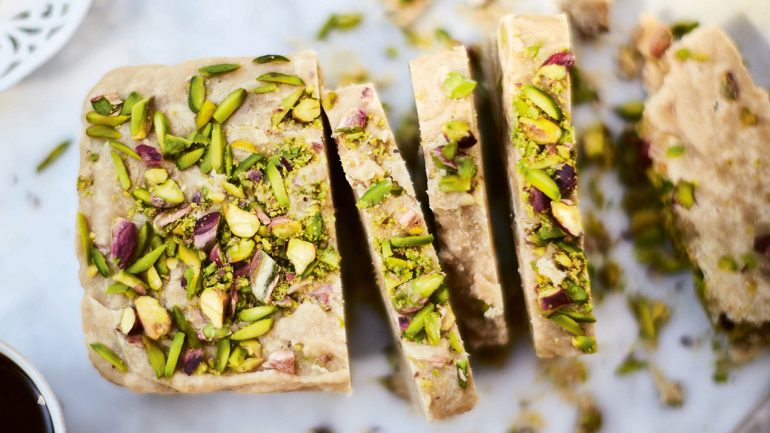
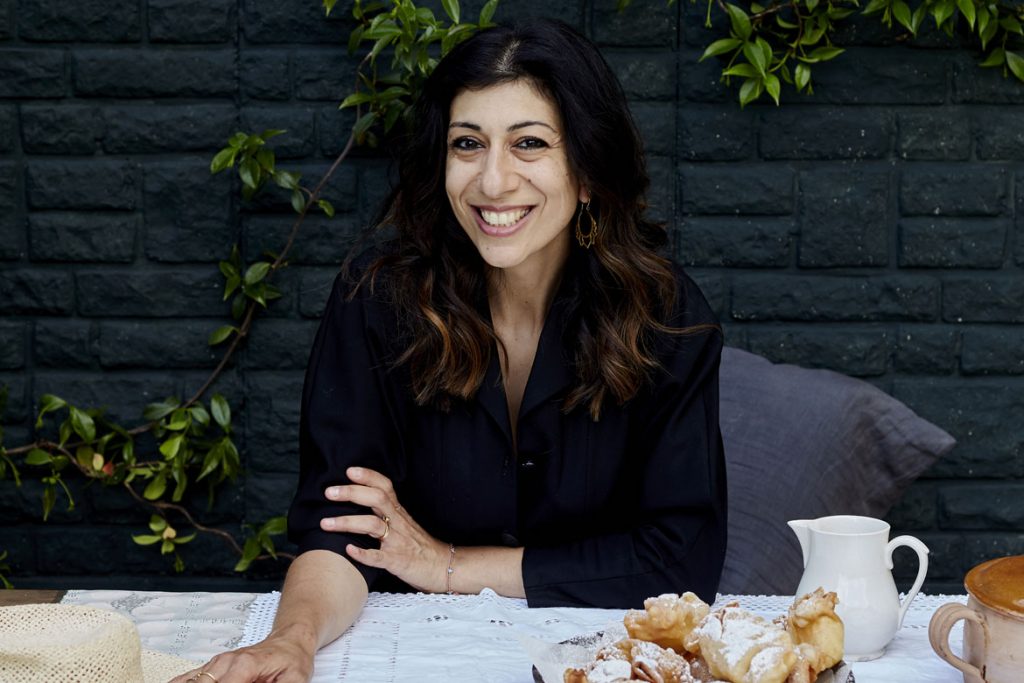
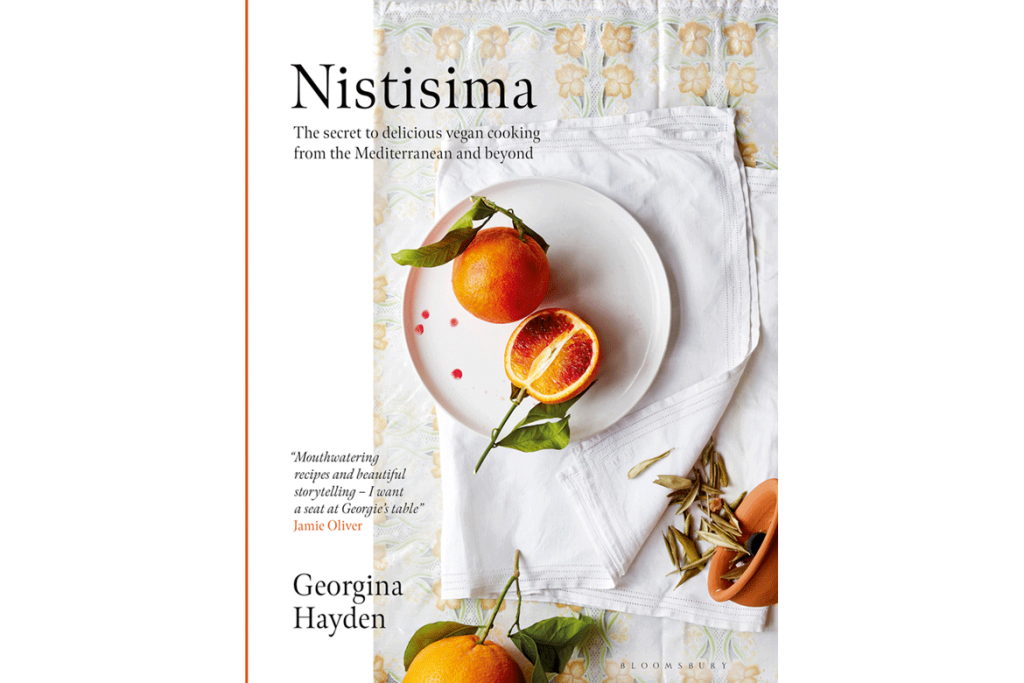
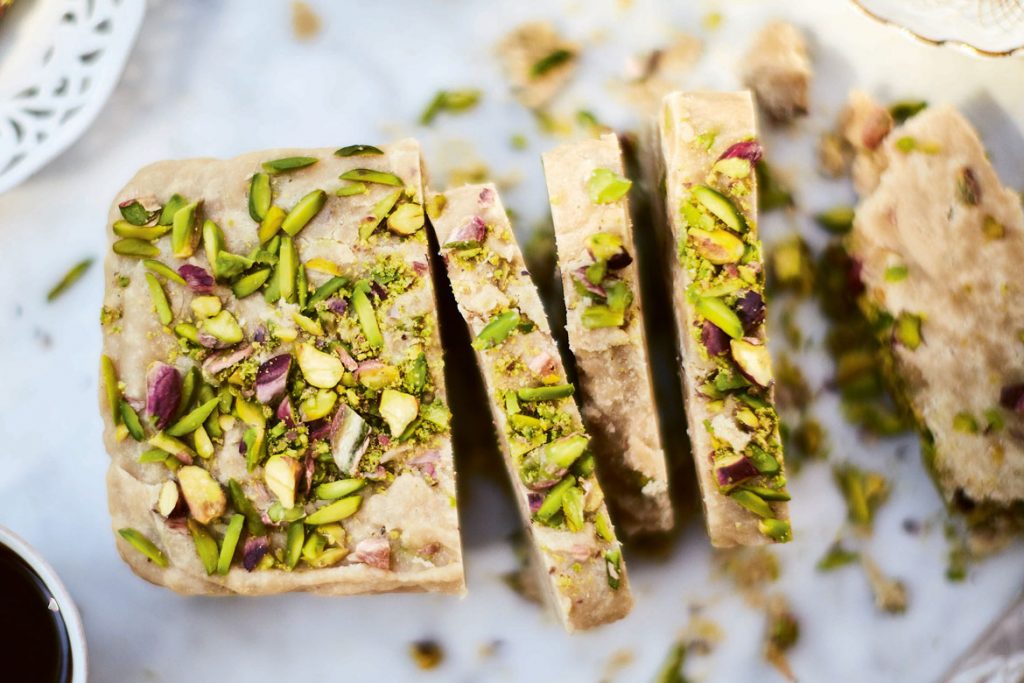
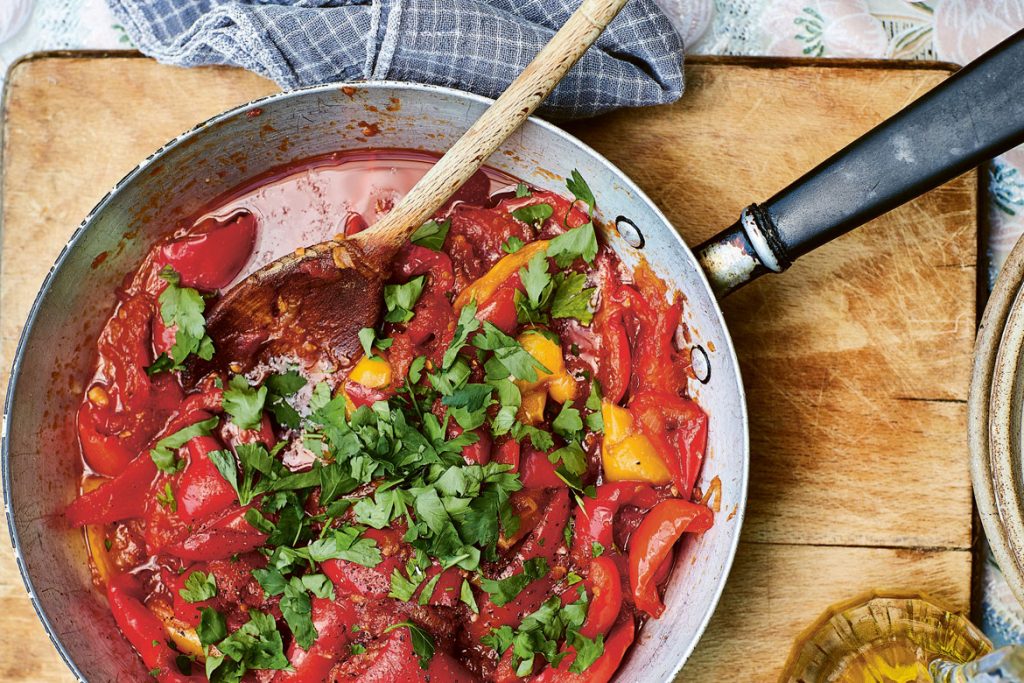
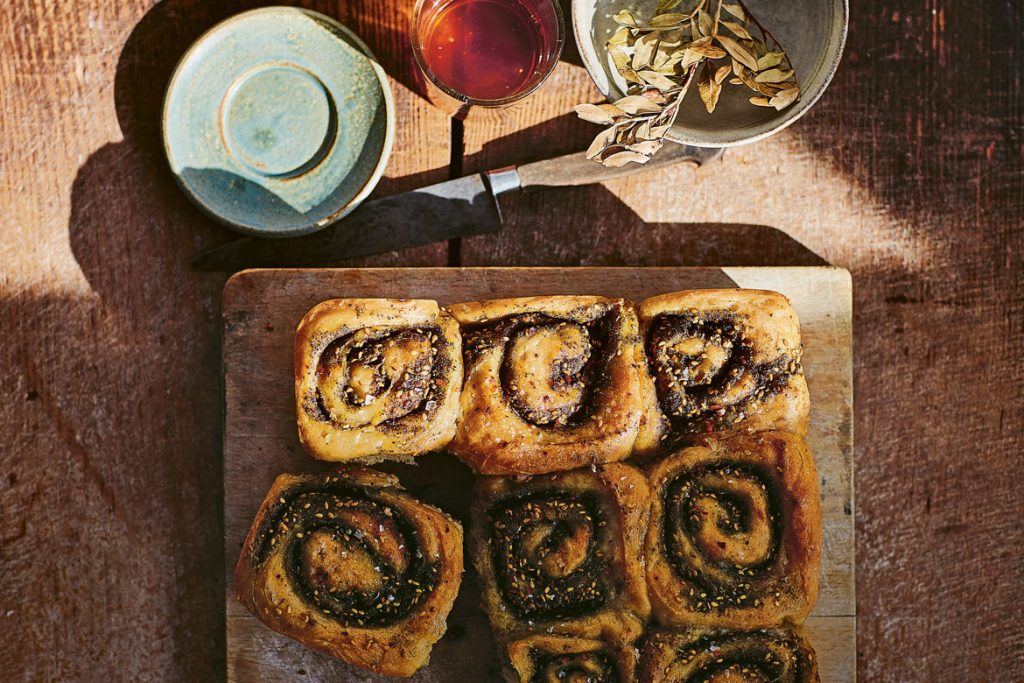

Leave a Reply